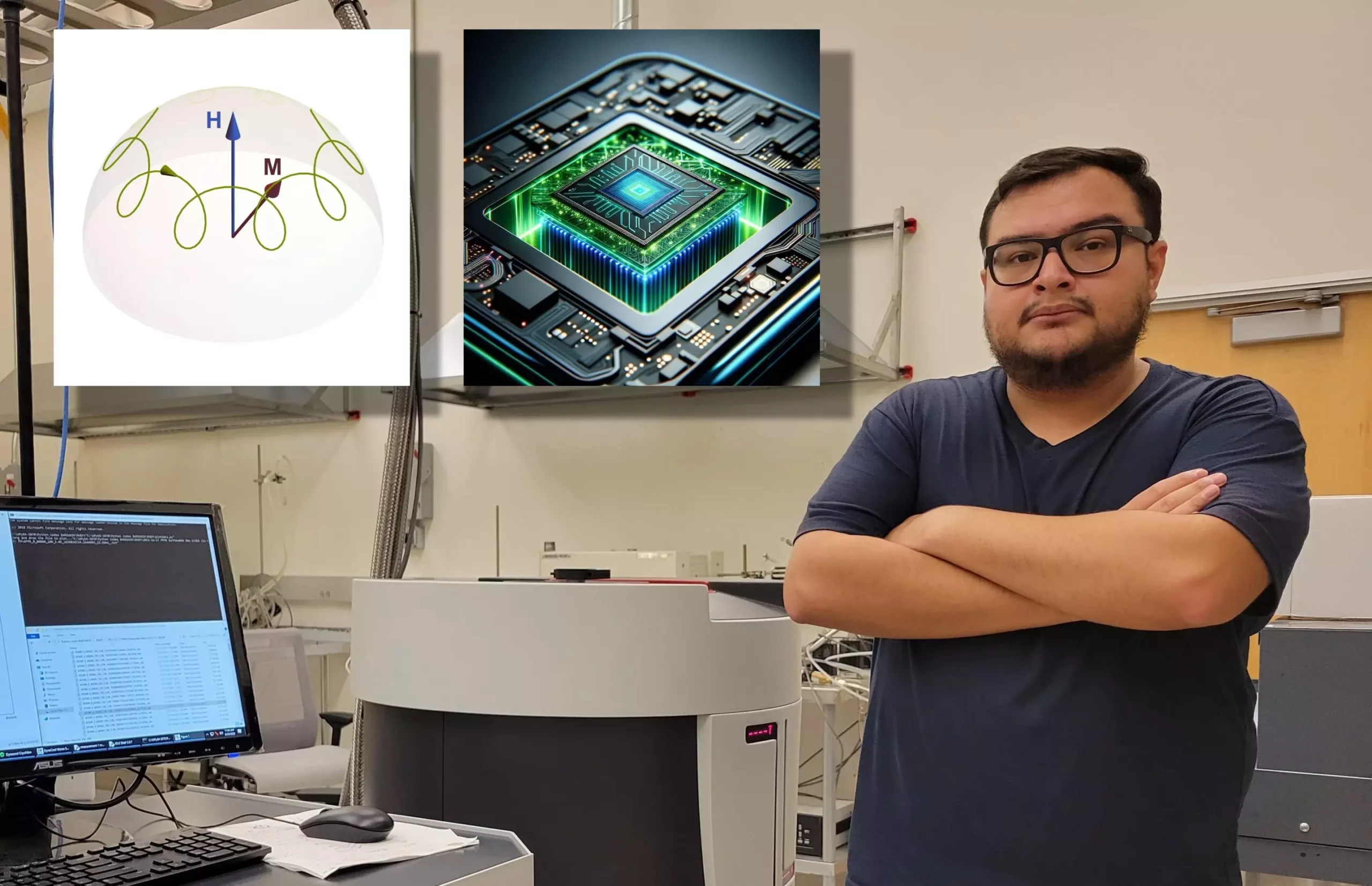In a groundbreaking study led by researchers at the University of California, Riverside, a major breakthrough has been achieved in enabling and exploiting ultra-fast spin behavior in ferromagnets. This research, titled “Spin inertia and auto-oscillations in ferromagnets,” published in Physical Review Letters, has been highlighted as an editors’ suggestion, opening up possibilities for ultra-high frequency applications in the field of communication and computation.
Ferromagnets are materials where electron spins align in the same direction, giving rise to spin waves that oscillate around this alignment. These spin waves play a crucial role in emerging computer technologies, serving as a key element in processing information and signals. According to Igor Barsukov, an associate professor of physics and astronomy who spearheaded the study, the oscillation of spins leads to the phenomenon of nutation, occurring at ultra-high frequencies and holding immense potential for future technologies.
Recent experimental findings confirming nutational oscillations have sparked excitement within the magnetism research community. Rodolfo Rodriguez, the first author of the paper, emphasized the significance of injecting a spin current with the “wrong” sign to excite nutational auto-oscillations, paving the way for self-sustained oscillations that could revolutionize computation and communication technologies. The study’s co-author, Allison Tossounian, highlighted the importance of incorporating spin inertia into the equation of motion to understand counterintuitive phenomena and drive technological innovation.
In addition to ferromagnets, the study also shed light on the potential of ferrimagnets, where two antiparallel spin lattices contain an unequal amount of spin. This type of material has garnered increased interest as a candidate for ultrafast applications, although various technological challenges still need to be addressed. Barsukov pointed out that while the understanding of spin currents and materials engineering for ferromagnets has advanced significantly in recent decades, there is an opportunity to leverage these developments along with the confirmation of nutation for the realization of ultra-high frequency applications.
The research conducted by the international team led by the University of California, Riverside, represents a significant step forward in the field of spin behavior in ferromagnets. By exploring the implications of nutational oscillations and spin inertia, the study has laid the groundwork for next-generation technologies that could operate at terahertz frequencies, offering a glimpse into a future where communication and computation are a thousand times faster. As scientists continue to unravel the mysteries of spin dynamics in magnetic materials, the potential for innovative applications and accelerated technological progress remains vast.


Leave a Reply